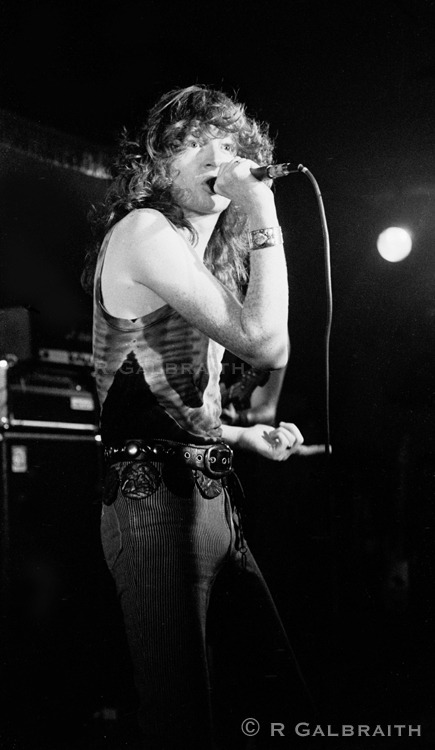#dave king
Explore tagged Tumblr posts
Text



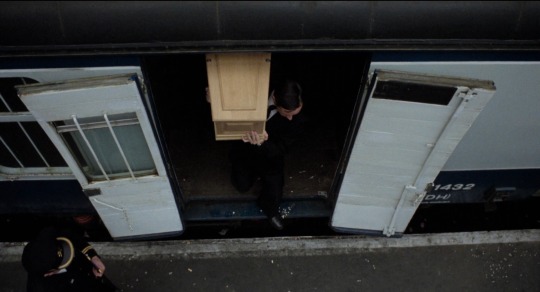


























The Long Good Friday (1980)
This electrifying British gangster classic stages a messy, blood-soaked international power play against a complex backdrop of political corruption, IRA activity, and redevelopment of London's docks, capturing an empire in decline.
Director: John Mackenzie
Cinematographer: Phil Meheux
Starring: Bob Hoskins, Helen Mirren, Eddie Constantine, Dave King, Bryan Marshall, Derek Thompson, Paul Freeman, Alan Ford, and Pierce Brosnan.
#the long good friday#john mackenzie#bob hoskins#helen mirren#british cinema#eddie constantine#dave king#derek thompson#paul freeman#alan ford#classic film#pierce brosnan#80s film#uk film#gangster movies#80s cinema#british film#uk cinema#british movies#80s films#80s movies#gangster film
8 notes
·
View notes
Text
Flogging Molly: Within A Mile Of Home (2004)





2023 Best Buy Limited Edition Exclusive Reissue on Translucent Tan Vinyl.
SIDEONEDUMMY Records
#my vinyl playlist#flogging molly#dave king#dennis casey#matt hensley#nathen maxwell#bridget regan#bob schmidt#george schwindt#fastway#sideonedummy records#celtic punk#punk#punk rock#folk punk#colored vinyl#album cover#album art#vinyl records#record cover
2 notes
·
View notes
Text
youtube
Song Review: Julian Lage - “Two and One” (Live, Jan. 20, 2024)
Julian Lage and band (t)eased their way into “Two and One,” repeatedly threatening to launch before pulling back.
This went on for some 80 seconds before the sauntering melody emerged Jan. 20 in San Francisco as documented on just-released professional video. Lage, on acoustic guitar, toggles between blues scales, classical ornamentation and jazzy improv as bassist Jorge Roeder, drummer Dave King and keyboardist Patrick Warren swing behind him.
He’s seated. But Lage is not sedate as he holds his axe perpendicular to the stage and frequently rises from his chair before handing off briefly to Roeder.
What begins with false starts concludes with false endings. And so, Lage and band threaten to cut off “Two and One” a few times before bringing the six-minute instrumental in for a smooth landing.
Grade card: Julian Lage - “Two and One” (Live - 1/20/24) - A
11/6/24
3 notes
·
View notes
Text

Fastway
#fastway#1980s#classic rock#fast eddie clarke#dave king#shane carroll#paul reid#alan connor#group shot#hard rock
16 notes
·
View notes
Text

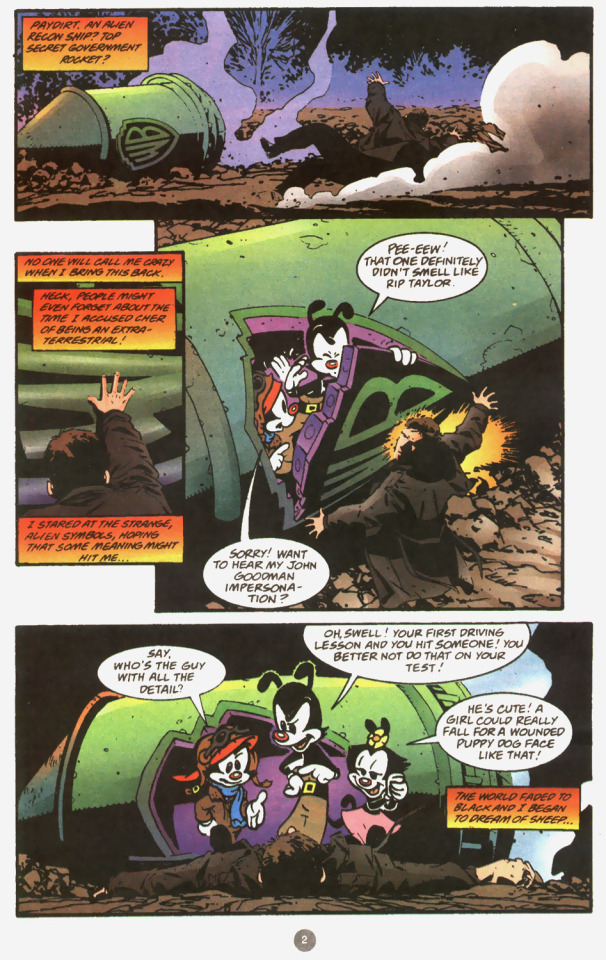
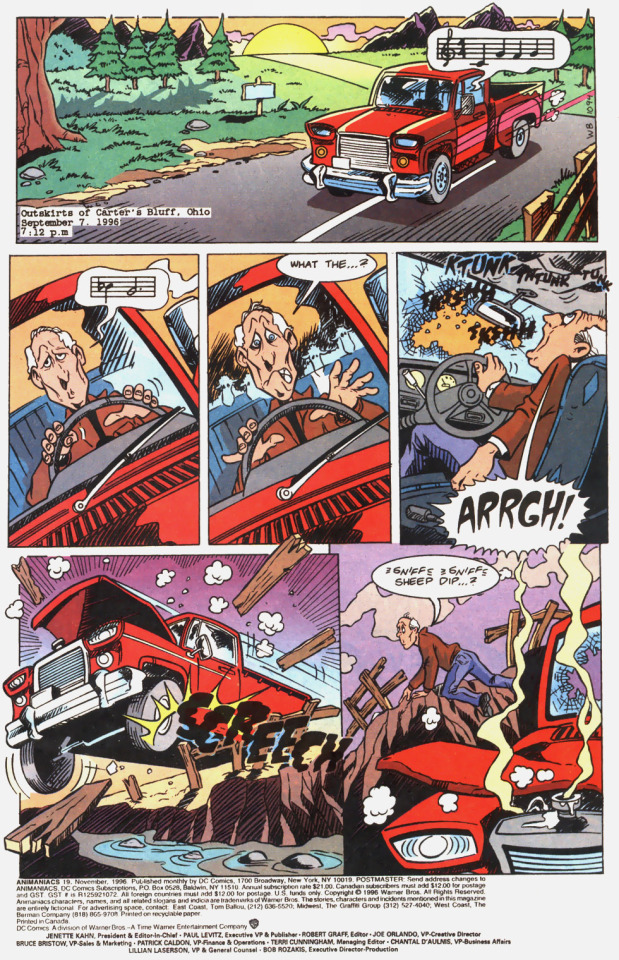


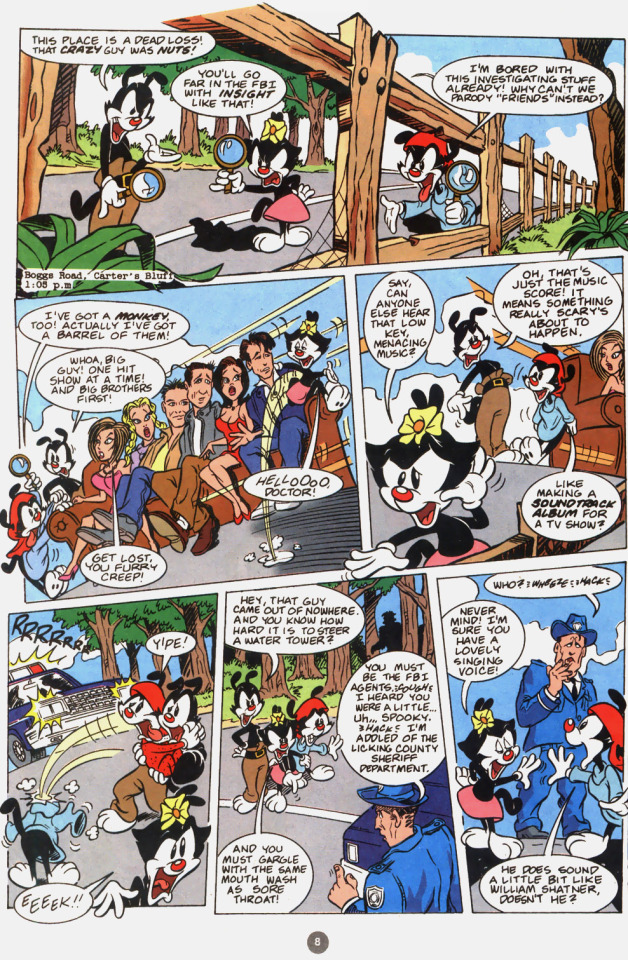

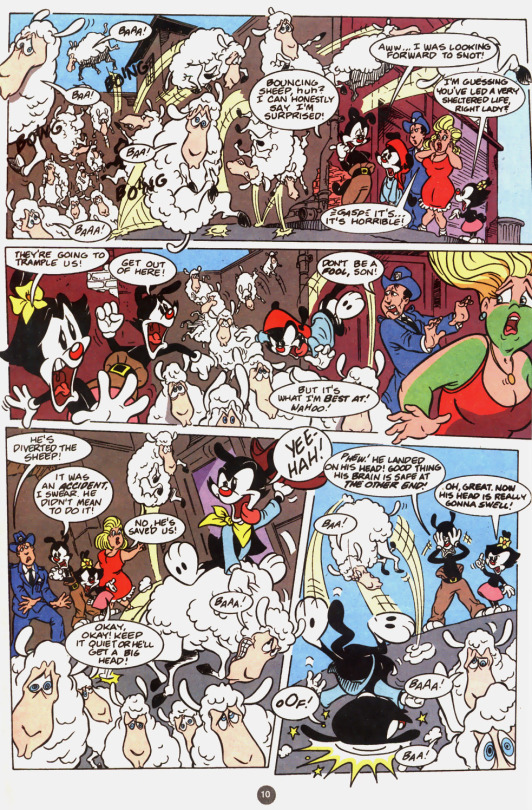
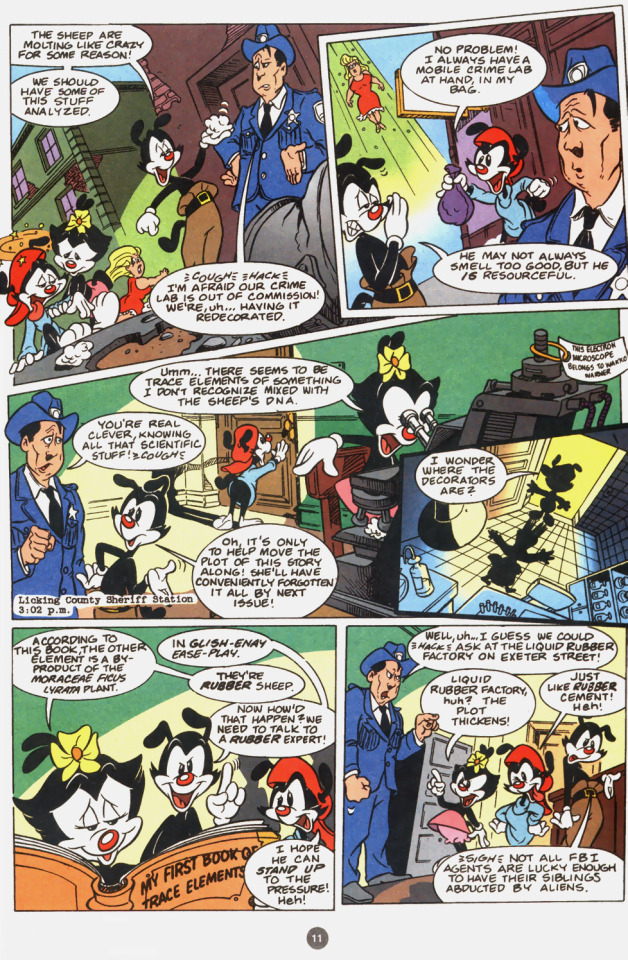


Animaniacs #19 November 1996
"The Y Files" (part 1-2 of 4)
written by Dave King illustrated by Charles Adlard
toon art by Neal Sternecky lettered by John Costanza
colored by Jo Meugniot
"Sheep" (part 1-9 of 10)
written by Dave King
illustrated by Omar Aranda & Scott McRae
lettered by Teresa Davidson
colored by Jo Meugniot
#dc comics#animaniacs#comics#dave king#charlie adlard#neal sternecky#john costanza#jo meugniot#omar aranda#scott mcrae#teresa davidson
12 notes
·
View notes
Text
"BLEAK HOUSE" (1985) Review
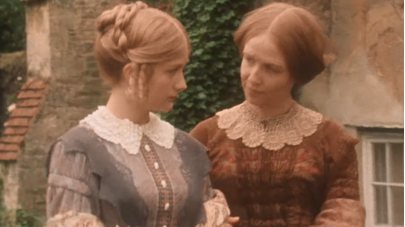
"BLEAK HOUSE" (1985) Review
In less than I year, I have developed this fascination with the works of Charles Dickens. How did this come about? I do not know. I have seen previous Dickens movie and television adaptations in the past. But ever since last year, I have been viewing these adaptations with a vengeance. And one of them turned out to be "BLEAK HOUSE", the 1985 adaptation of Dickens' 1852-53 novel.
Adapted by Arthur Hopcraft, this eight-episode miniseries conveyed the affects of Jarndyce v Jardyce, a long-running legal probate case involving the existence of more than one will. The heirs and their descendants have been waiting decades for the court to determine the legal will, for the sake of a large inheritance. Among those affected by the Jarndyce v Jardyce case are:
*John Jarndyce - a wealthy English landowner, who happens to be the proprietor of the estate, Bleak House. Jarndyce had inherited it from his uncle Tom Jarndyce, who had went mad waiting for a verdict on the case before committing suicide. *Richard Carstones - Tom Jarndyce's grandson and John Jarndyce's cousin, who also became one of the latter's legal wards, and a potential beneficiary of the Jarndyce v Jardyce case. *Ada Clare - Tom Jarndyce's granddaughter and Mr. Jarndyce's cousin, who also became one of his legal wards, and a potential beneficiary of the Jarndyce v Jardyce case. She and Richard, also cousins, became romantically involved. *Esther Summerson - one of the novel's main characters and orphan, who became Mr. Jarndyce's ward following the death of her previous guardian, Miss Barbury, who had also been her biological aunt. She joined the Bleak House household as Ada's companion and Mr. Jarndyce's housekeeper after he became the guardian of Richard and Ada. *Honoria, Lady Dedlock - the wife of baronet Sir Leicester Dedlock and a beneficiary of the Jarndyce v Jardyce case. She is also the younger sister of Miss Barbury and Esther's illegitimate mother. *Captain John Hawdon aka Nemo - a former British Army officer, who became an impoverished law writer and drug addict. He is also Lady Dedlock's former lover and Esther's illegitimate father. His penmanship on one of the Jarndyce v Jardyce affidavit attracts Lady Dedlock's attention. *Mr. Bill Tulkinghorn - Sir Leicester's ruthless lawyer, who noticed Lady Dedlock's reaction to the affidavit. This leads him to investigate her past and possible connection to Hawdon aka "Nemo". *Miss Flite - An elderly woman living in London, whose family had been destroyed by a long-running Chancery case similar to Jarndyce v Jarndyce. This has led her to develop an obsessive fascination with Chancery cases, especially the main one featured in this story. She quickly befriended Esther, Richard, Ada and Mr. Jarndyce.
As one can see, these characters represented plot arcs that connect to the Jarndyce v Jarndyce case. As one of the beneficiaries of the Jarndyce case, Richard becomes obsessed with the verdict. He seemed more interested in depending upon the Jarndyce verdict to provide him with an income rather than pursue a profession. This obsession eventually led to a clash between and Mr. Jarndyce, who has tried to warn him not to get involved with the case. Another clash formed between Lady Dedlock and Mr. Tulkinghorn, due to his determination to find proof of her past with Nemo and the conception of their child. A clash that proved to create even more damaging for a good number of people, than the one between Mr. Jarndyce and Richard. In the midst of all this stood Esther, who served as an emotional blanket for several characters - especially the inhabitants at Bleak House, a potential romantic figure for three men (ironic for a woman who was not supposed to be a great beauty), and the center of the Lady Dedlock-Nemo scandal.
For years, 1985's "BLEAK HOUSE" had been viewed as the superior adaptation of Dickens' novel. The first novel aired back in 1959. But a third television adaptation that aired in 2005 had managed to overshadow this second adaptation's reputation. But this is not about comparing the three adaptations. I am focusing only the 1985 miniseries. If I might be blunt, I believe screenwriter Arthur Hopcraft and director Ross Devenish created one of the better Charles Dickens I have personally seen. Granted, one might use the source material - the 1952-53 novel - as the reason behind the miniseries' top quality. But I have seen my share of poor adaptations of excellent source material . . . and excellent adaptations of poor or mediocre novels and plays. And I would find this excuse too simply to swallow. Hopcraft and Devenish could have easily created a poor or mediocre adaptation of the novel. Fortunately, I believe they had managed to avoid the latter.
With eight episodes, Hopcraft and Devenish did an excellent job in conveying Dickens' exploration into the chaos of the legal landscape in 19th century Britain, especially cases involving the Chancery courts. One might consider the longevity of Jarndyce v Jarndyce rather exaggerated. However, I speak from personal experience that an extended length of time in such a case is more than possible. But what I thought the effect of Jarndyce v Jarndyce and similar cases in Dickens' story seemed very interesting. In Richard Carstone's case, I suspect his own hubris and upbringing had allowed the case to have such a toxic effect upon him. He had been raised as a gentleman. Which meant he was not expected to work for a living. But since he did not possess a fortune or an estate - like Mr. Jarndyce - Richard never lost hope that the court would rule the Jarndyce v Jarndyce case in his favor, allowing him to inherit a great deal of money. Although it took another case to send Miss Flyte mentally around the bend, I found it interesting that her obsession with Chancery cases led her to attach her interest to the Jarndyce case beneficiaries.
The Jarndyce case also produce a group of leeches in the forms of attorneys like Mr. Tulkinghorn and his obsession with assuming control over the Dedlocks and Mr. Vholes, who had sucked a great deal of money from Richard in exchange for his legal services. The series also featured the vicious moneylender Mr. Smallweed, who helped Mr. Tulkinghorn in the latter's campaign against Lady Dedlock; and Mr. Jarndyce's "friend", Harold Skimpole, who had not only encouraged Richard to pursue a greater interest in the Jarndyce case, but also had accepted a "commission" from Vholes to recruit the young man as a client. Would I regard William Guppy as a leech? Sometimes. I had noticed that one particular story arc was missing - namely the story arc regarding the philanthropist Mrs. Jellyby, her daughter and Esther's friend, Caddy and the Turveydrop family. This did not bother me, for I have never been a fan of that particular arc.
However, I also noticed that "BLEAK HOUSE" featured a few moments in which important plot points had been revealed through dialogue or shown after the fact. Audiences never saw Skimpole convince Richard to hire Mr. Vholes. Instead, Mr. Jarndyce had revealed this incident after it happened. The whole scenario regarding Dr. Allan Woodcock being a survivor of a shipwreck was handled as a past event revealed by the good doctor himself. Hopcraft's script never stretched it out in the same manner as Dickens' novel or the 2005 miniseries. Audiences never saw George Rouncewell's release from jail, for which he had been incarcerated for murder. Instead, Episode Seven began with George in jail and later, near the end, found him serving as Sir Leicester's valet without any information on how that came about.
"BLEAK HOUSE" featured a few other writing and direction decisions by Hopcraft and Devenish that I found . . . well, questionable. Why did the pair solely focused on Lady Dedlock in the series' penultimate episode and Richard and the Jarndyce v Jarndyce case in the final one? Would it have been so difficult for them to switch back and forth between the two arcs in those final episodes? I found Inspector Bucket's resolution to the story's murder mystery rather rushed. I would have liked to see Bucket eliminate suspects before solving the case. In Bucket's final scene with the killer, Hopcraft left out that moment from the novel when the latter had the last scathing word on British society, leaving the police detective speechless. This erasure dimmed the impact of Dickens' message and made the killer even more of a caricature. I had some issues with how Devenish directed certain performances. How can I put this? I found them a bit theatrical.
I have one last issue - namely Kenneth MacMillan's cinematography. I realize that in "BLEAK HOUSE", fog represented institutional oppression and human confusion and misery in society. Unfortunately, I feel that MacMillan may have been heavy-handed in utilizing this symbol in the series. It is bad enough that photography featured a fuzzy element that seemed popular in many period productions in the 1970s. But thanks to MacMillan's use of fog in the story, there were many moment in which I could barely see a damn thing. And I found that irritating.
Aside from a few quibbles, I had no real issues with the performances featured in "BLEAK HOUSE". One of those quibbles proved to be the performances for some of the secondary cast members. How can I say this? The exaggerated and wooden performances for some of the cast members brought back memories of some of the minor actors' bad performances in 1982 miniseries, "THE BLUE AND THE GRAY". I must admit that I did not care for Pamela Merrick's portrayal of Lady Dedlock's French maid, Madame Hortense. Her performance bordered and then surpassed the lines of caricature - as some British actors/actresses tend to do. Charlie Drake's portrayal of the moneylender Smallweed tend to waver between a pretty solid performance and pure caricature. Although there were moments when I found her portrayal of the eccentric Miss Flyte a bit hammy, I must admit that Sylvia Coleridge gave a well-done performance. Chris Pitt's performance as Jo, the crossing sweeper boy struck me as very poignant. Yet, at the same time, he seemed so passive that at times, I found it difficult to believe he had survived on the streets on his own, for so long. Jonathan Moore, whom I had remembered from the 1988 television movie, "JACK THE RIPPER"; did an excellent job of conveying the ambitious and self-interested nature of law clerk William Guppy. However, his portrayal of Guppy seemed to lack the character's comedic nature. Denholm Elliot gave a very interesting performance as Esther, Richard and Ada's guardian, John Jarndyce. On one level, I found his portrayal of the kind-hearted Mr. Jarndyce as first-rate. Excellent. But there were moments, including the character's famous quote following Jo's death, when Elliott's Mr. Jarndyce seemed to resemble one of those "angry young men" characters from a John Osbourne play. I found those moments very odd.
However, there were performances that did not leave me scratching my head. Colin Jeavons and Anne Reid gave very competent performances as the grasping solicitor Mr. Vholes and George Rouncewell's close friend Mrs. Bagnet, respectively. Ironically, Jeavons had portrayed Richard Carstone in the 1959 adaptation of "Bleak House" and Reid had portrayed Mrs. Rouncewell in the 2005 television adaptation. Both Suzanne Burden and Lucy Hornak gave solid performances as Esther Summerson and Ada Clare. And yet, both actresses managed to rise to the occasion with some brilliant moments. Burden's moment came, following Esther's realization that she had survived the smallpox. As for Hornak, she gave an excellent performance during Ada's soliloquy about her love's growing obsession with the Jarndyce case. Brian Deacon gave a passionate performance as Dr. Allan Woodcourt, the penniless doctor in love with Esther. Ian Hogg gave a very solid, yet commanding performance as Inspector Bucket. I really enjoyed Sam Kelly's warm portrayal of the law-stationer, Mr. Snagsby. Bernard Hepton gave one of the most colorful performances of his career as the alcoholic rag and bone shopkeeper, Krook. Dave King gave a very solid performance as the loyal, yet intimidating and conservative former Army sergeant George Rouncewell. I found George Sewell's performance as Sergeant Rouncewell's older brother, the wealthy Mr. Rouncewell not only entertaining, but very memorable. I thought Robin Bailey did an excellent job portrayed the haughty and proud Sir Leicester Dedlock.
But there were four performances that really impressed me. One came from Philip Franks, who did an excellent job of conveying Richard Carstone's emotional journey from John Jarndyce's warm and friendly young man, to the more embittered one, obsessed with the Jarndyce case. T.P. McKenna gave a delicious performance as Mr. Jarndyce's self-involved friend, Harold Skimpole, who proved to be quite the emotional (and financial) vampire. I thought Peter Vaughan was superb as the Dedlocks' sinister lawyer, Mr. Tulkinghorn. I was amazed by how Vaughn managed to combine the character's dedication to protecting his client Sir Leicester and his penchant for assuming control over others. If I had voted for the best performance featured in "BLEAK HOUSE", I would choose Diana Rigg's portrayal of the tragic Honoria, Lady Dedlock. I believe the actress gave a brilliant performance as the mysterious, yet complicated baronet's wife, whose cool demeanor hid a great deal of emotions and a personal secret. I am shocked and amazed that neither she, Vaughn, McKenna or Franks had ever received any accolades for their performances.
In fact, I am surprised that "BLEAK HOUSE" had only received BAFTA nominations (and won three) . . . and they were in the technical/arts category, aside for the Best Drama Series/Serial. No Primetime Emmy nominations, whatsoever. Was this eight-part miniseries the best adaptation of Charles Dickens' 1852-53 novel? I cannot answer that question. Granted, it had its flaws. But what television or movie production did not? But I cannot deny that "BLEAK HOUSE" was a first-rate miniseries that deserved more accolades than it had received, thanks to Arthur Hopcraft's screenplay, Ross Devenish's direction and an excellent cast led by Suzanne Burden, Denholm Elliott and Diana Rigg.
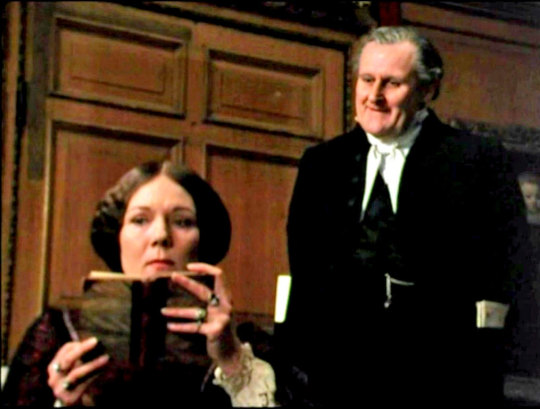
#charles dickens#bleak house#bleak house 1985#arthur hopcraft#ross devenish#suzanne burden#denholm elliott#diana rigg#peter vaughan#philip franks#lucy hornak#colin jeavons#anne reid#dave king#george sewell#robin bailey#brian deacon#chris pitt#sam kelly#ian hogg#jarndyce v. jarndyce#jonathan moore#pamela merrick#sylvia coleridge#charlie drake#bernard hepton#t.p. mckenna#victorian age#period drama#period dramas
4 notes
·
View notes
Text
Tube Surfing: Dave Gibbons, a Breaking into Comics guide, a shameless plug, and some stunning Batman art
A quick scurry around the interweb channels with items on writing comics by Alec Worley, a Dave Gibbons update, and news of a new feature film from Dave King…

View On WordPress
#Alec Worley#Animation News#B7 Comics#B7 Media#Batman#Creating Comics#Dave Gibbons#Dave King#downthetubes News#Hachette#Hachette Partworks#Hibernia Comics#Inktober#John M. Burns#Neil Edwards#Norbertine Bresslern-Roth#Pilgrim - Secrets and Lies#Sofia Girol Aviles#Stephen White#Tube Surfing#Wamberto Nicomedes
5 notes
·
View notes
Text


Dave is out of the deepest part of the woods - here's hoping Bridget can take a big breath and get some rest herself.
He's a tough ol bugger ☘️
I've decided I'm getting my long awaited Flogging Molly tattoo this year by hook or crook.
1 note
·
View note
Text






You know, Dave is just really pretty
1 note
·
View note
Text
Flogging Molly: Swagger (2000)







2023 Best Buy Exclusive Limited Edition Reissue on Red Vinyl.
SideOneDummy Records
#my vinyl playlist#flogging molly#dave king#bridget regan#matt hensley#nathen maxwell#bob schmidt#george schwindt#john donovan#gary schwindt#sideonedummy records#celtic punk#celtic rock#punk rock#punk#folk punk#colored vinyl#album cover#album art#vinyl records#record cover
4 notes
·
View notes
Text

Album Review: Julian Lage - Speak to Me
Acoustic or electric, esoteric or tightly composed, the 13 tracks comprising Julian Lage’s Speak to Me are good for an hour of sometimes-challenging, more-often-engaging interaction with the guitarist.
It’s an LP unlikely to satisfy either jazz or rock ‘n’ roll purists. But for those fans who straddle the blurry line between genres, Lage continues to offer a thick menu of musical offerings designed to sate.
Recording with his trio - bassist Jorge Roeder and drummer Dave King - with contributions from saxophonist Levon Henry and keyboardist Patrick Warren sprinkled throughout, Lage uses Speak to Me to wordlessly explore his many influences and tastes.
So it transpires that a plugged-in Lage surfs over a wave of rhythm section, piano and sax toward Link Wray on “Northern Shuffle;” fills in the gaps between Paul McCartney’s “That Would be Something” and the Allman Brothers Band’s “Melissa” on the glistening and wooden “Omission;” imagines how the Vince Guaraldi Trio might have sounded had the bandleader been a guitarist on “Serenade;” and takes a small nip of “Tequila” on the title cut.
While the preceding assist in mainstreaming jazz, Lage nods toward the opaque on several tracks where formlessness rules. These include such numbers as “South Mountain,” “Vanishing Points,” “Tiburon” and “Nothing Happens Here.”
Grade card: Julian Lage - Speak to Me - B-
4/30/24
#julian lage#speak to me#2024 albums#jorge roeder#dave king#levon henry#patrick warren#link wray#paul mccartney#the allman brothers band#vince guaraldi
2 notes
·
View notes
Text
youtube
3 notes
·
View notes
Text
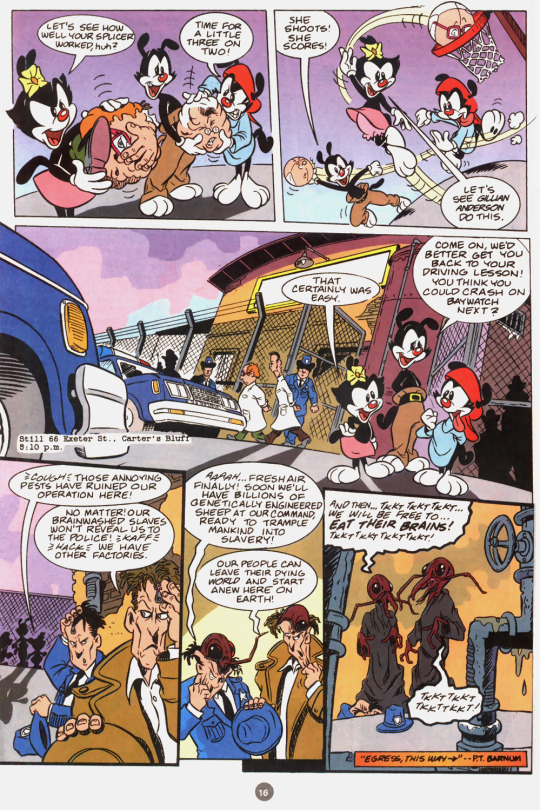
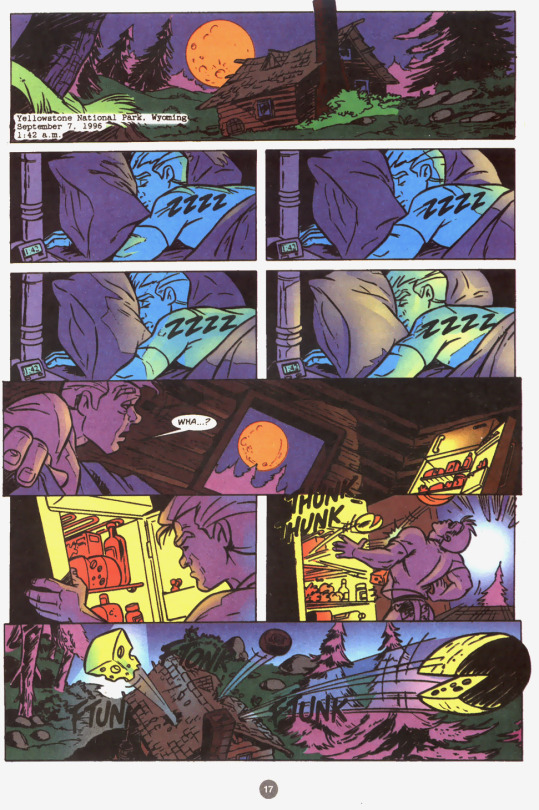
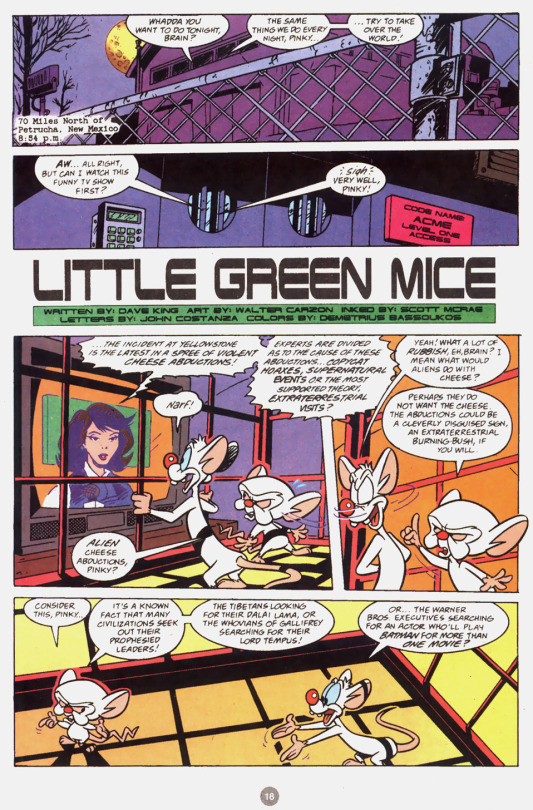
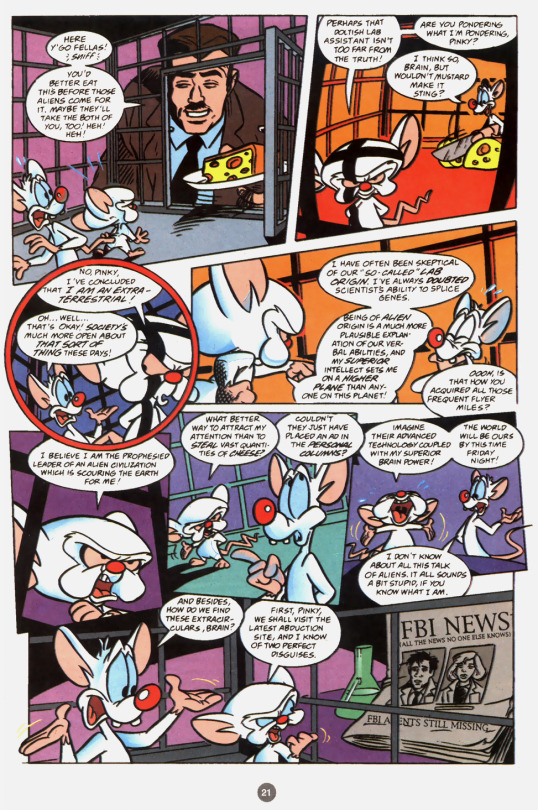

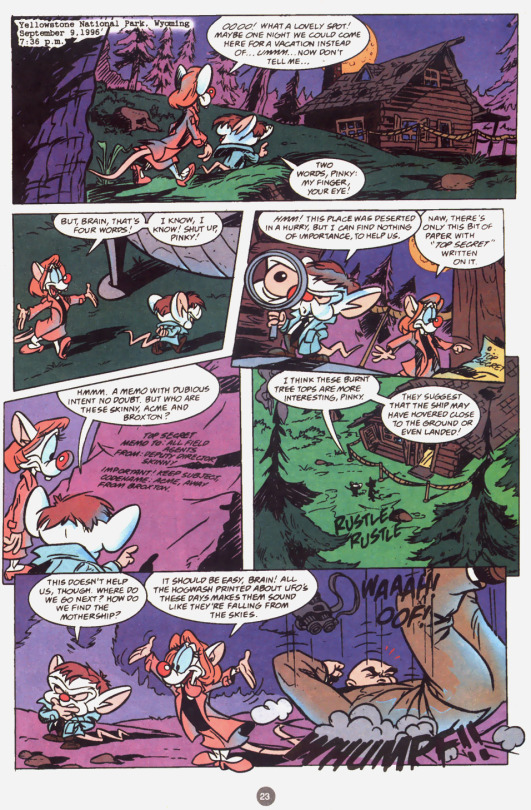


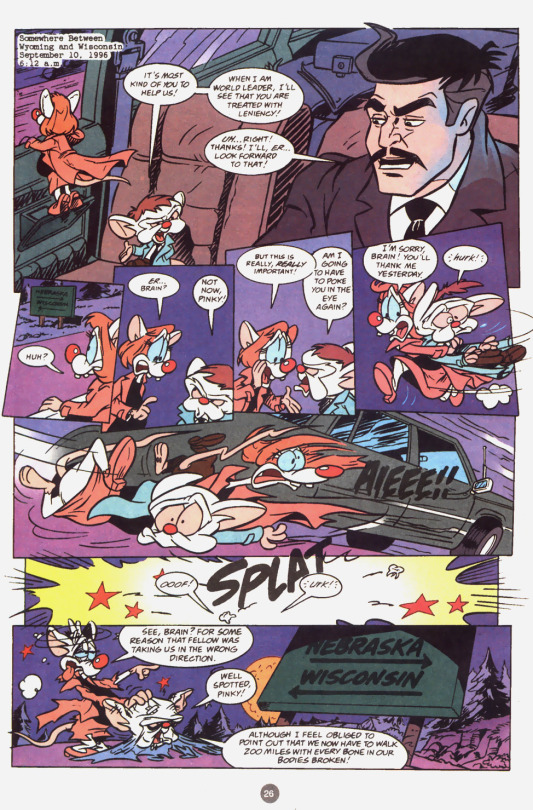
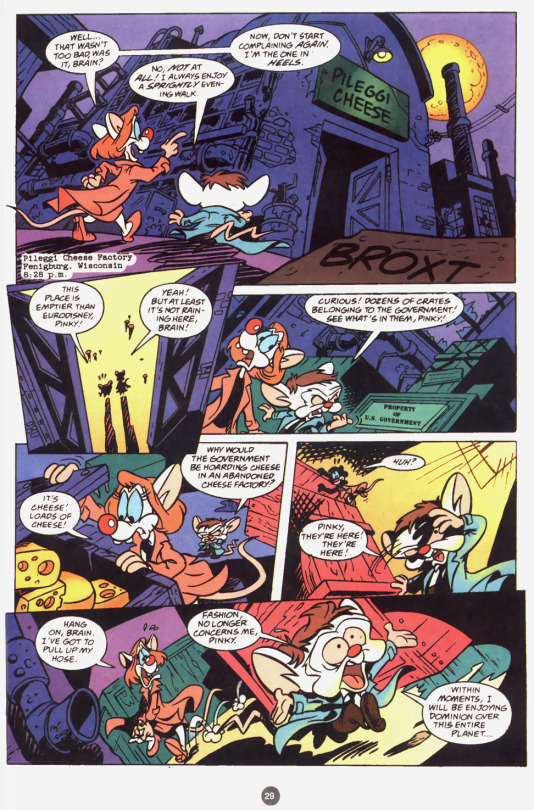



Animaniacs #19 November 1996
"Sheep" (part 10 of 10)
written by Dave King
illustrated by Omar Aranda & Scott McRae
lettered by Teresa Davidson
colored by Jo Meugniot
"Little Green Mice"
written by Dave King art by Walter Carzon
inked by Scott McRae letters by John Costanza
colors by Demetrius Bassolkos
"The Y Files" (part 3-4 of 4)
written by Dave King illustrated by Charles Adlard
toon art by Neal Sternecky lettered by John Costanza
colored by Jo Meugniot
#dc comics#animaniacs#comics#dave king#omar aranda#scott mcrae#teresa davidson#jo meugniot#walter carzon#john costanza#demetrius bassolkos#charlie adlard#neal sternecky
9 notes
·
View notes
Text
Week ending: 15th March
Back to multiple songs, one of which is a cover, and one of which I definitely know - in fact, one of the lines has become practically proverbial, which is how you know a song's made it into the collective consciousness. Or how many other songs do you know that have become a sort of call-and-response greeting?
Memories Are Made of This - Dave King (peaked at Number 5)
I didn't massively love this song in its original Dean Martin form, but I didn't hate it, and a speedy google tells me that Dave King was a British actor and comedian, who got his first ever break in a comedy group called Morton Fraser's Harmonica Gang, which means I'm already in his corner from the get-go. So we shall see!
I can tell already from the intro that the speed has been upped a bit, and a jolly trombone added, both of which are very welcome additions. It turns it from a bit of a lecture into a swinging song you could genuinely dance to. And the little changes continue as the song wears on, with the addition of some church bells after the wedding bells lyric, and a separate female set of backing singers who take over the more religious with His blessings from above section while Dave steps back and briefly takes over the backing singers' lines. It's an effective little swap, and all the more so for the way it avoids slowing the song, which I remember not appreciating when Dean did it.
These are all little things, but they're enough to massively improve the song, at least for me. I was ready for Dave to add some comedy beats or a sort of comic sensibility to this à la Max Bygraves, but it turns out he didn't even need to, which I respect. This is just a solid cover, no comedy needed.
I would also be remiss not to mention that Dave gives us what I think is our first (but surely not our last) overlap between the words of British popular music and British soaps, having played a character called Clifford Duckworth in Coronation Street. He also appeared on an episode of Heartbeat in the 1990s, which is notable only because it's a police procedural set in the 1950s and 1960s, and what song did they play over the top of his exit? If you guessed Memories Are Made of This, well done! It's the kind of twistiness I really like, so kudos to their casting department, I guess?
See You Later, Alligator - Bill Haley & His Comets (7)
Come on, you know this song. Just about everybody I know, even in 2024, even in the UK, could quote you the response when somebody says "see you later alligator", and I'm sure a good proportion of them could also hum you the tune of this song. It was a phrase that was apparently already in currency when the song came out, but the song popularised it internationally. And honestly, I can see why.
There's just such a sense of fun to the track, from the pitched-up See you later, alligator line at the start, to the silly playground rhyminess of it, to the relish with which Bill launches in with each wellllllll and the way that the saxophone echoes his lines. It's not a song that takes itself too seriously, and I love that playfulness.
With all this, it's easy enough to ignore the fact that that yes, that iconic line is a break-up line from a cheating lady! From the moment that Bill saw my baby walkin' with another man today, to her iconic brush-off, to the even more devastating line where she tells Bill Can't you see you're in my way now / Don't you know you cramp my style, this song pulls no punches whatsoever. This woman, whoever she is, is going straight for the jugular!
Which makes it all the more satisfying when she comes crawling back and apologising, and Bill, now recovered from his heartbreak, can turn her words back on her, calling her out for how she doesn't really mean it, and bidding her farewell in the same callous way. His glee at this reveral makes the whole enterprise worth it, honestly. I particularly love the wild energy of Bill's final so long, that's all, goodbye line! He's just so glad to be shot of this woman, and you know what, good for him. It's a good, satisfying story, one you could absolutely find in a pop song today - think Forget You by CeeLo Green, or something of that ilk.
It's also catchy as heck, which, as I've probably said before, is really the main thing that matters in these early rock and roll songs. They're music for dancing along to, not for listening too hard to, and this song is repetitive, silly and has a heck of a riff to build on, with the way that the melody bounces between Bill and the saxophone. Plus, we get that sax / drum / guitar break in the middle, where the sax in particular cuts loose. It rocks, and I can absolutely imagine the youth going wild when it comes it!
It's also a very intense, full sound. I've noticed that about these rock and roll numbers - there's no space around the vocals or quiet bits, like it's been engineered for maximum volume, even on tinny radio or a jukebox. We're a way away from Phil Spector and the Wall of Sound, but we're already gunning for maximum loudness, and I kind of love it?
Well, those were two quite different songs, and while I did enjoy both, I think the sheer volume and dancability has to take it this time. While the adults are getting maudlin about marriage and kids, the youths are having all the fun, it seems.
Favourite song of the bunch: See You Later Alligator
0 notes
Text
Flogging Molly – Brooklyn Steel – September 19, 2023

Nearly three decades into their accomplished career and Flogging Molly are still going strong. Last summer they put out their seventh studio album, the Steve Albini–produced Anthem, and last night the tour in support of it brought the Los Angeles Celtic-punk seven-piece to Brooklyn Steel.















Photos courtesy of Dana Distortion | distortionpix.com
#Bridget Regan#Brooklyn#Brooklyn Steel#Dana Distortion#Dave King#Dennis Casey#Matt Hensley#Mike Alonso#Nathen Maxwell#Photos#Spencer Swain#Steve Albini
0 notes
